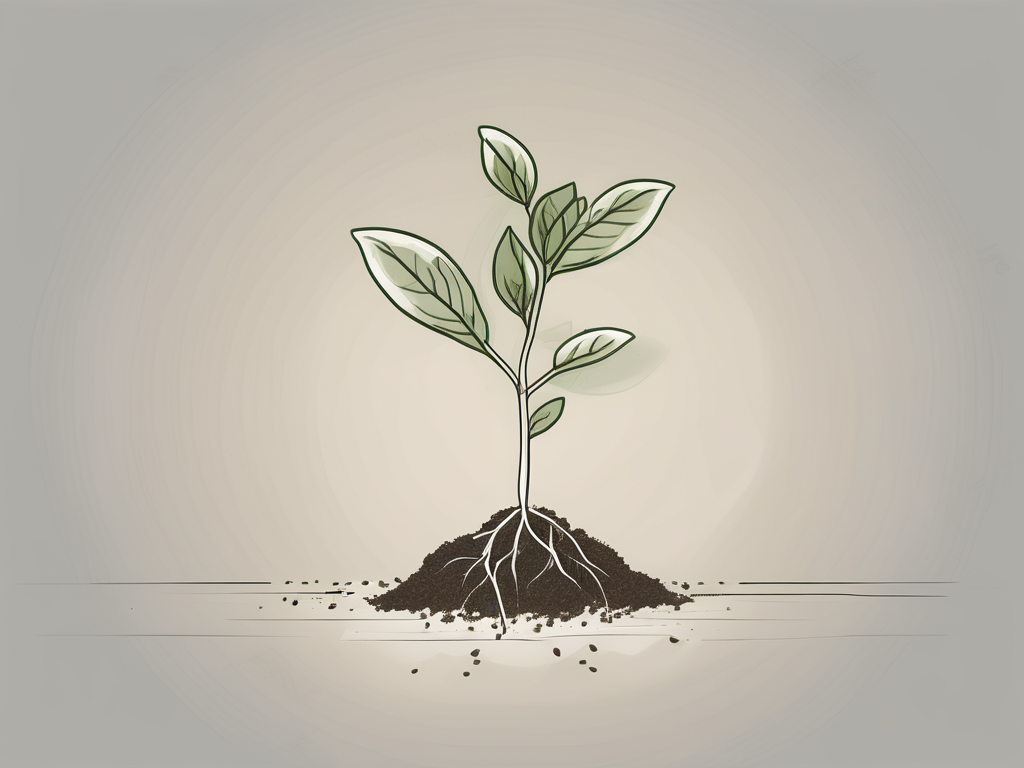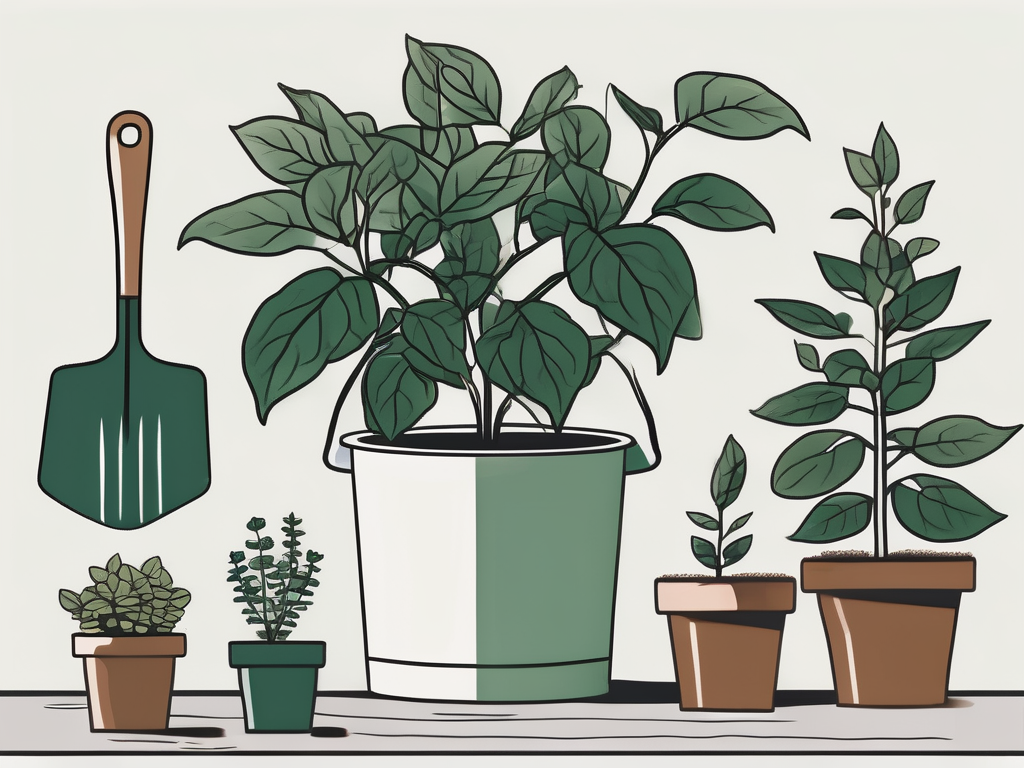
Geo plants, with their striking foliage and intriguing patterns, have become a favorite among plant lovers looking to add a unique touch to their indoor gardens. Their vibrant leaves and easy-to-care-for nature make them a delightful addition to any home. But what's even more exciting is that you can propagate them, multiplying your collection without spending a dime.
This article walks you through the entire process of propagating geo plants, from selecting the right plant to nurturing your new growth. Whether you're a seasoned plant parent or a beginner, these step-by-step instructions will guide you in successfully propagating your geo plants at home.
Choosing the Right Geo Plant for Propagation
Before you start snipping and planting, it's important to pick the right geo plant for propagation. Not all plants are created equal in this regard, and some might be more challenging to propagate than others. So, how do you decide which one to start with?
First, consider the health and maturity of the plant. A healthy, mature plant is more likely to produce successful cuttings. Look for a plant that has vibrant leaves, showing no signs of disease or distress. Avoid plants with yellowing or drooping leaves, as these might not have the energy needed to support new growth.
Next, think about the type of geo plant you have. Some, like the popular Geogenanthus ciliatus, are known for their propagation-friendly nature. These plants have thick stems that can be easily cut and rooted. In contrast, some other varieties might require more specific conditions to propagate successfully.
Finally, take a look at your plant's growth pattern. If your geo plant has multiple stems or offshoots, it's a good candidate for propagation. These offshoots can often be separated from the main plant and grown on their own, making them an excellent choice for beginners.
Gathering the Necessary Tools
Once you've picked the perfect plant, it's time to gather your tools. Having the right equipment on hand makes the process smoother and increases your chances of success. Here's what you'll need:
- Sharp Scissors or Pruning Shears: These are essential for making clean cuts on the plant. Dull tools can crush the stems, making it harder for them to root.
- Small Pots or Seedling Trays: These will hold your cuttings as they root. Make sure they have good drainage to prevent waterlogging.
- Potting Mix: A light, well-draining mix is best for geo plant cuttings. You can use a standard potting soil mixed with perlite or sand to improve drainage.
- Rooting Hormone (Optional): While not necessary, rooting hormone can speed up the rooting process and increase your success rate.
- Watering Can: Gentle watering is key to keeping your cuttings healthy without disturbing them.
Having everything ready before you start will make the process go more smoothly, and you'll be less likely to disturb your cuttings once they're in place.
Taking Cuttings from Your Geo Plant
Now comes the fun part—taking cuttings from your geo plant. This is where you get to play the role of plant surgeon, carefully selecting the parts of the plant that will become your new babies. Don't worry, it's easier than it sounds!
Start by identifying healthy stems on your plant. These should be free of blemishes and should have at least a couple of leaves attached. The stem should be firm to the touch, which indicates that it's healthy and ready for propagation.
Using your sharp scissors or pruning shears, make a clean cut just below a node. The node is where the leaves meet the stem, and it's where new roots will develop. A cutting that's around 4-6 inches long is ideal, as it has enough leaves to support itself while rooting but isn't too large to manage.
If your plant has offshoots, these can often be removed with a gentle tug or a quick snip at the base. These offshoots are already primed to grow on their own and can be planted directly into soil.
Preparing Your Cuttings for Planting
With your cuttings in hand, it's time to prepare them for planting. This step is crucial for encouraging root growth and ensuring your cuttings have the best chance of thriving.
Begin by removing any leaves from the lower part of the cutting. You want to leave a few leaves at the top to help the cutting photosynthesize, but too many leaves can lead to excess water loss. Aim to have at least one or two nodes below the soil line, as this is where the roots will form.
If you're using rooting hormone, now's the time to apply it. Dip the cut end of the stem into the hormone powder, tapping off any excess. This step is optional, but it can help your cuttings root more quickly and successfully.
Next, prepare your pots or seedling trays. Fill them with your potting mix, ensuring it's damp but not soggy. Make a small hole in the soil with your finger or a pencil, and gently place the cutting into the hole. Firm the soil around the base of the cutting to hold it in place.
Caring for Your New Cuttings
With your cuttings planted, the next step is to care for them as they develop roots. This stage requires a bit of patience, as it can take a few weeks for roots to form. But with the right care, your cuttings will soon be thriving on their own.
Place your pots in a warm, bright location, but avoid direct sunlight. Too much sun can scorch the leaves and dry out the cuttings before they've had a chance to root. A windowsill with indirect light is often a perfect spot.
Keep the soil consistently moist, but not waterlogged. Too much water can cause the cuttings to rot, while too little can cause them to dry out. A light misting every few days can help maintain the right moisture level without disturbing the delicate roots.
You might also cover the pots with a plastic bag or use a propagator lid to create a humid environment. This helps prevent the cuttings from losing too much moisture and encourages faster rooting.
Transplanting Your Rooted Cuttings
After a few weeks, you should start to see signs of root growth. Gently tug on the cuttings – if they resist, roots have likely formed. At this point, they're ready to be moved to their new, permanent homes.
Choose pots that are slightly larger than the root ball of your cutting. This gives the roots room to grow without overwhelming the plant with too much soil. Fill the pot with fresh potting mix, and make a hole in the center for your cutting.
Carefully remove the cutting from its original pot, being mindful not to damage the new roots. Place it in the new pot, and firm the soil around the base to hold it in place. Water the plant lightly to help settle the soil around the roots.
Return the plant to its bright, indirect light spot and continue to care for it as you would any geo plant. Regular watering, occasional feeding, and keeping an eye out for pests will help your new plants thrive.
Troubleshooting Common Issues
Propagating geo plants isn't always smooth sailing, and sometimes things can go awry. Here are a few common issues you might encounter, along with tips for addressing them.
If your cuttings aren't rooting, check the moisture level of the soil. Too much or too little water can both hinder root growth. Adjust your watering schedule accordingly, ensuring the soil remains damp but not soggy.
Yellowing leaves can indicate overwatering or poor drainage. Ensure your pots have drainage holes and that excess water can escape. If the problem persists, consider repotting the cuttings in a lighter soil mix.
Mold or fungus on the soil surface is often a sign of too much humidity. Remove any affected leaves, reduce watering, and increase ventilation around the cuttings. A small fan can help circulate air and prevent mold growth.
Enjoying Your New Geo Plants
Once your propagated geo plants are settled into their new homes, it's time to enjoy the fruits of your labor. There's something incredibly satisfying about nurturing a plant from a small cutting into a thriving member of your indoor garden.
Your new plants can be displayed on shelves, in hanging baskets, or even as part of a larger plant arrangement. Their unique foliage adds a touch of natural beauty to any space, making them a versatile choice for home decor.
Don't forget to share your success with friends and family. Propagating plants is a wonderful way to share your love of gardening and introduce others to the joys of houseplants. Plus, they're fantastic gifts that keep on giving!
Final Thoughts
Propagating geo plants is a rewarding endeavor that allows you to expand your collection and share the joy of plants with others. From choosing the right plant to nurturing new growth, each step is a chance to connect with nature and enhance your indoor space.
At Cafe Planta, we love helping plant people on their green journey. Whether you're an experienced plant parent or just starting out, we're here to support you with a range of houseplants, care accessories, and plant-themed apparel. If you have any questions or need advice, don't hesitate to email us or reach out on Instagram. Let's grow together!












